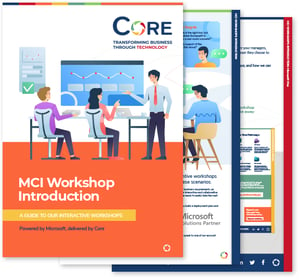Microsoft’s Cloud Solution Provider (CSP) model has been around for a long time—but in 2025, it’s playing a far more strategic role than ever before. What was once seen as a simple way to manage licences and billing has quietly evolved into a key component of how organisations approach cloud transformation, cost optimisation, and digital agility.
If you haven’t revisited how your Microsoft licences are managed—or who’s managing them—it might be time for a fresh look.
The New Era of Licensing
With tools like Microsoft 365, Azure, and Microsoft Copilot reshaping how we work, many businesses are finding that their licensing needs are more dynamic, complex, and closely tied to business strategy than ever before.
Whether it's scaling up to support hybrid workforces, adding advanced security features, or keeping pace with AI innovation, the days of “set it and forget it” licensing are gone. Organisations now need flexibility, transparency, and a partner who can offer more than just provisioning.
That’s where the modern CSP model comes in.
What Today’s CSP Model Should Offer
The CSP programme has matured well beyond simple resale. Today, a modern CSP partner can provide:
- Flexible, scalable billing that aligns with your usage and business cycles
- Expert guidance on choosing the right Microsoft licences and bundles for your needs
- Support for compliance and cost governance, especially across multiple cloud services
- Access to roadmap insights—so you can align your licence strategy with Microsoft’s evolving product landscape
- Integrated services like cloud migrations, security assessments, or AI readiness workshops
The real value lies not in the licences themselves—but in how they’re managed, optimised, and aligned with your long-term goals.
Why Many Organisations Are Re-Evaluating Their Licensing Approach
In conversations with UK-based IT leaders, a few themes keep coming up:
- Lack of visibility into what they’re paying for and why
- Unresponsive or transactional partners who aren’t proactive in adding value
- Frustration with rigid billing models that don’t reflect changing user needs
- Concerns about underutilised tools, particularly around Microsoft 365 E5, security features, and new AI capabilities
These aren’t just operational pain points—they’re missed opportunities. When licensing is done well, it supports smarter decision-making, frees up budget, and lays the groundwork for innovation.
What to Look for in a CSP Partner
If you’re thinking about reviewing your licensing partner, here are a few things worth considering:
- Do they provide regular usage and optimisation reviews?
- Can they offer strategic advice, not just sales?
- Are they aligned with Microsoft’s roadmap and certifications?
- Do they understand your industry, regulatory pressures, or internal challenges?
- Are they adding value beyond licensing—such as helping you prepare for tools like Microsoft Copilot?
These questions can help you move from a purely transactional relationship to one that truly supports your digital strategy.
Scalable CSP for the Modern Workplace
Microsoft licensing is no longer just a back-office function—it’s a lever for agility, cost control, and innovation. And with the CSP model now offering more flexibility and capability than ever, the real differentiator is who you choose to partner with. For many UK organisations, that means rethinking not just what they buy, but how—and who from.
Whether you’re planning to scale, improve security, or explore the possibilities of AI in the workplace, the right licensing approach—and the right partner—can make all the difference.






